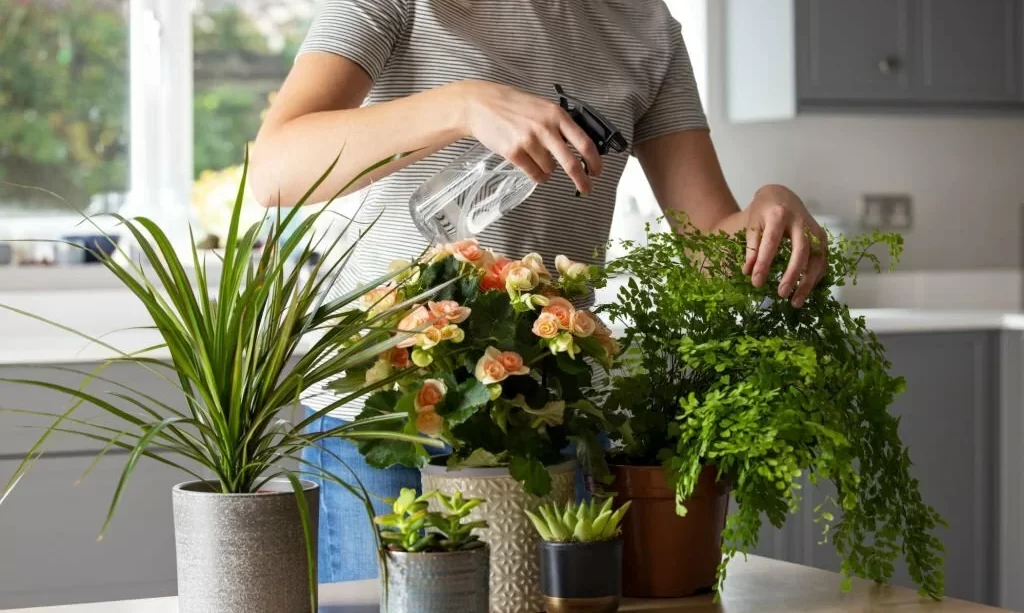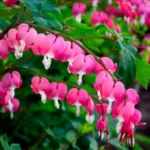The care and maintenance of plants, whether they adorn our homes or flourish in our gardens, is an art and a science. Among the practices that contribute to the well-being of plants, flushing is a vital technique that often goes hand in hand with watering. But how can you flush your plants effectively without running the risk of overwatering? In this article, we delve into the world of plant care, exploring the essential process of flushing and offering insights into the art of balancing hydration without drowning your green companions. Understanding the intricacies of flushing is key to promoting healthy plant growth and ensuring longevity.
- Best value, one bottle makes 50 gallons of nutrient rich, odorless fertilizer that feeds instantly
- Easy to use & feeds instantly. Just mix a cap full of Purived Plant Food to 1 gallon of water & feed
- All-purpose, nutrient rich formula designed to feed indoor & outdoor potted plants
- Formulated for all types of feeding methods: soil drench, foliar feed, full & semi hydroponics
Purpose of Flushing
Flushing is a practice that serves a crucial purpose in the care of plants, whether they are grown indoors or in outdoor gardens. The primary objective of flushing is to remove excess salts and nutrients from the soil or growing medium. Over time, as plants are watered and receive fertilizers, minerals and nutrients can accumulate in the soil. While these nutrients are essential for plant growth, an excess can lead to a phenomenon known as nutrient buildup or salt buildup.
Nutrient buildup can negatively impact plant health by disrupting the delicate balance of nutrients required for growth. It can lead to a range of problems, including nutrient imbalances, poor root health, and reduced plant vitality. Flushing serves as a corrective measure to address this issue by flushing out the excess salts and accumulated nutrients from the soil, restoring a healthier balance.
The benefits of flushing are manifold. It prevents the potential toxicity of accumulated salts, facilitates nutrient uptake by plant roots, and reduces the risk of nutrient-related problems. By regularly flushing your plants, you promote their overall well-being and longevity, enhancing their ability to thrive and flourish.
Choosing the Right Time for Flushing
Flushing your plants is not a one-size-fits-all procedure; it requires careful consideration and timing. Several factors influence when it’s appropriate to flush your plants. Here are some key considerations:
1. Growth Stage: The growth stage of your plants plays a significant role in determining when to flush. For example, it’s generally recommended to flush during the vegetative stage for outdoor garden plants. Indoor plants might require flushing when they show signs of nutrient buildup.
2. Pot Size: The size of the container or pot in which your plant is growing can influence the timing of flushing. Smaller pots may necessitate more frequent flushing due to limited soil volume.
3. Environmental Conditions: Environmental factors such as temperature, humidity, and light intensity can impact the rate at which plants take up water and nutrients. Flushing during periods of moderate temperature and suitable humidity can be advantageous.
Before initiating the flushing process, it’s essential to assess your plant’s needs and consider these factors to determine the most appropriate time to flush. By timing your flush effectively, you can maintain nutrient balance, promote healthier growth, and prevent potential issues associated with nutrient buildup.
Proper Flushing Techniques
Flushing plants effectively involves a systematic process to ensure that excess salts and accumulated nutrients are thoroughly removed without causing harm to the plant. Here are some proper flushing techniques to consider:
- Leach and Drain Method: This is one of the most common and effective techniques for flushing. Start by selecting a container that allows excess water to drain freely, such as a pot with drainage holes. Water the plant thoroughly until you see water escaping from the drainage holes. Continue to water until a significant amount of water has passed through the soil, carrying away accumulated salts. Ensure that the plant is positioned in a place where excess water can drain away, preventing waterlogged soil.
- Sub-Irrigation: Sub-irrigation involves watering the plant from the bottom rather than the top. Place the potted plant in a tray or container with water. The plant will absorb water through the roots, and any excess salts in the soil will be leached into the tray. This method can be especially useful for larger potted plants.
- Adjust Water pH: In some cases, adjusting the pH of the water used for flushing can be beneficial. This can help neutralize excess salts and improve nutrient uptake. Water with a slightly acidic pH (around 6.5) is often recommended for flushing.
- Monitor Drainage: Keep an eye on the water draining from the pot during the flushing process. As the water drains, it may carry salts and excess nutrients with it. Once the draining water appears clear and free from excessive runoff, the flushing process is complete.
Signs of Overwatering and How to Avoid It
While flushing is essential for plant health, it’s equally important to avoid overwatering during the process. Overwatering can lead to root rot and other water-related issues. Here are some tips to avoid overwatering:
- Monitor Soil Moisture: Before and during the flushing process, use a moisture meter or your fingers to assess soil moisture levels. Wait until the top inch or two of the soil has dried out before initiating the flushing process.
- Choose the Right Pot: Select pots or containers with drainage holes to prevent water from accumulating at the bottom. Adequate drainage is key to preventing overwatering.
- Allow for Proper Drying: After flushing, ensure that the soil has sufficient time to dry out before the next watering. This prevents waterlogged soil and root damage.
- Be Mindful of Humidity: Adjust your watering schedule based on environmental conditions. Higher humidity levels may require less frequent watering.
- ALL-IN-ONE POTTING SOIL SOLUTION: FoxFarm ocean forest potting soil is a blend designed to give your plants everything they need to thrive. Ideal for container plants, this planting soil provides optimal nutrient and soil aeration
- MOISTURE-LOCKING NUTRIENT BLEND: This organic potting soil for plant is packed with aged forest products, sphagnum peat moss, earthworm castings, bat guano, and fish emulsion, each ingredient enhances moisture retention and nutrient uptake
- TOP-NOTCH SOIL FOR EVERY PLANT: From roses and shrubs to seedlings and trees, this garden soil supports vigorous growth and branching. This outdoor & indoor plant soil’s pH-adjusted blend promotes healthy, lush foliage for all plant varieties
- YOUR GO-TO SOIL FOR ALL MEDIUMS: Our potting soil mix is perfect for container gardens, houseplants, and outdoor setups. Ocean plant versatile blend provides a balanced environment for robust growth, ensuring your plants thrive in any setting
- CONVENIENT SOIL READY TO USE: This houseplant potting soil is ready to use out of the bag, no additional ingredients are needed. Use for planting or top-dressing, with the optional pairing of FoxFarm liquid fertilizers for enhanced growth all season
Conclusion
In conclusion, flushing plants is a crucial practice for maintaining the health and vitality of your green companions. It serves the essential purpose of removing excess salts and accumulated nutrients, ensuring a balanced and nourishing environment for plant growth. Understanding the timing and techniques for flushing is key to promoting healthy plant development.
By employing proper flushing techniques and being mindful of overwatering, you can enhance the well-being of your plants and enjoy the benefits of lush, thriving greenery in your home or garden. The art of flushing without overwatering is a skill that contributes to the long-term success of your plant care efforts.





